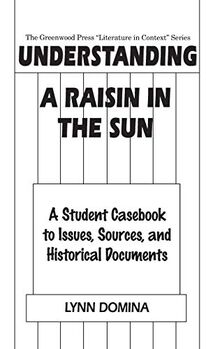
A Raisin in the Sun is the first play by a black woman to be produced in a Broadway theater. First performed in 1959, before the civil rights and women's movements came to the fore, it raises issues of segregation, family strife, and relationships between men and women that are both representative of the time and timeless in their universality. This interdisciplinary collection of commentary and forty-five primary documents will enrich the reader's understanding of the historical and social context of the play. A wide variety of primary materials sheds light on integration and segregation in the 1950s and 1960s; relationships between African Americans and Africans; relationships between men and women within African American culture; Chicago as a literary setting for the play; and contemporary race relations in the 1990s. Documents include first-person accounts, magazine articles and editorials espousing opposing arguments, excerpts from the works of Toni Morrison, W.E.B. DuBois, Marcus Garvey, bell hooks, Malcolm X, and Richard Wright, and a selection of pertinent government documents and eye-opening statistics. Many of the documents are available in no other printed form. Each chapter concludes with study questions and topics for research papers and class discussion, as well as lists of further reading for examining the themes and issues raised by the play.
The casebook begins with a literary analysis of the play, its themes and dramatic structure. Two chapters on the historical context provide commentary and documents on the history of segregation and integration in the United States, focusing on segregation in employment and education as well as in housing, and relationships between African Americans and Africans and the back to Africa movement. A chapter situates the play within the context of the literature of Chicago, including articles about race problems, as well as excerpts from Upton Sinclair's The Jungle, Richard Wright's Native Son, Carl Sandburg's poem Chicago, and other pieces. The topic of the relationship between African American men and women is explored in a variety of articles on the African American family, black fatherhood, black masculinity, and the problems of African American women. A chapter on contemporary race relations examines the current situation and includes first-person accounts by two African American teenagers, current employment statistics for African Americans, and articles on current problems facing them. Each document is preceded by an explanatory introduction, and each chapter concludes with study questions and topics for research papers and class discussion, as well as lists of further reading for examining the themes and issues raised by the play.